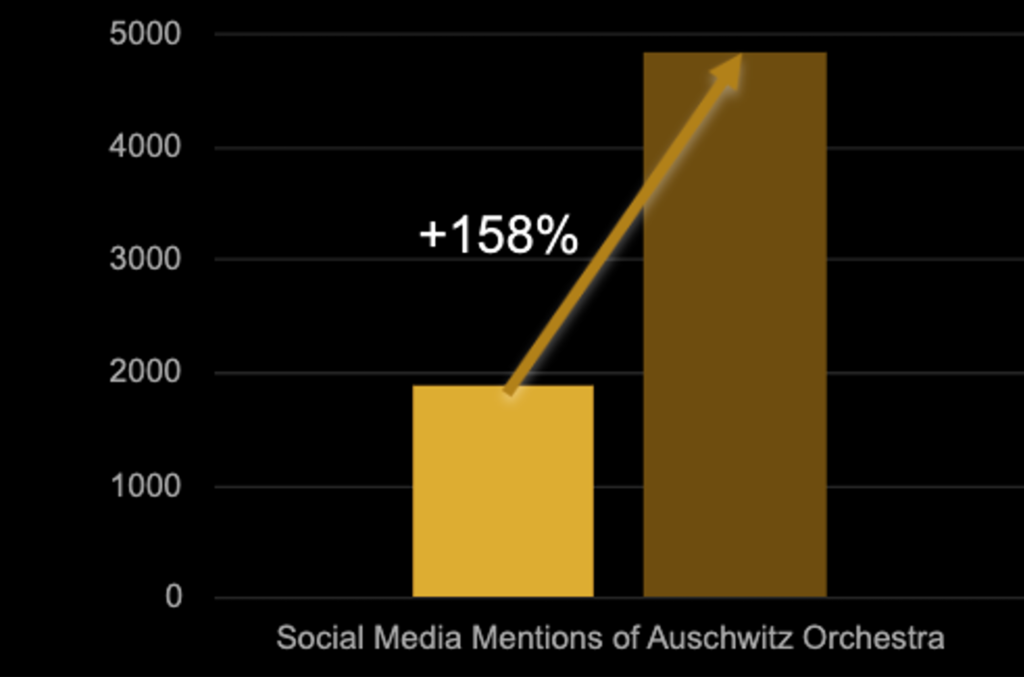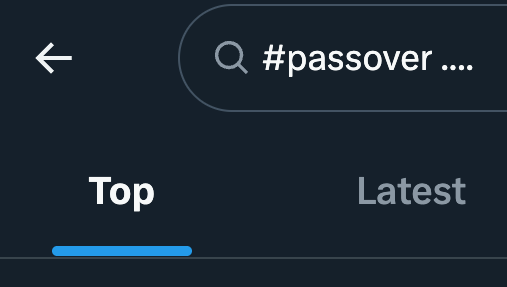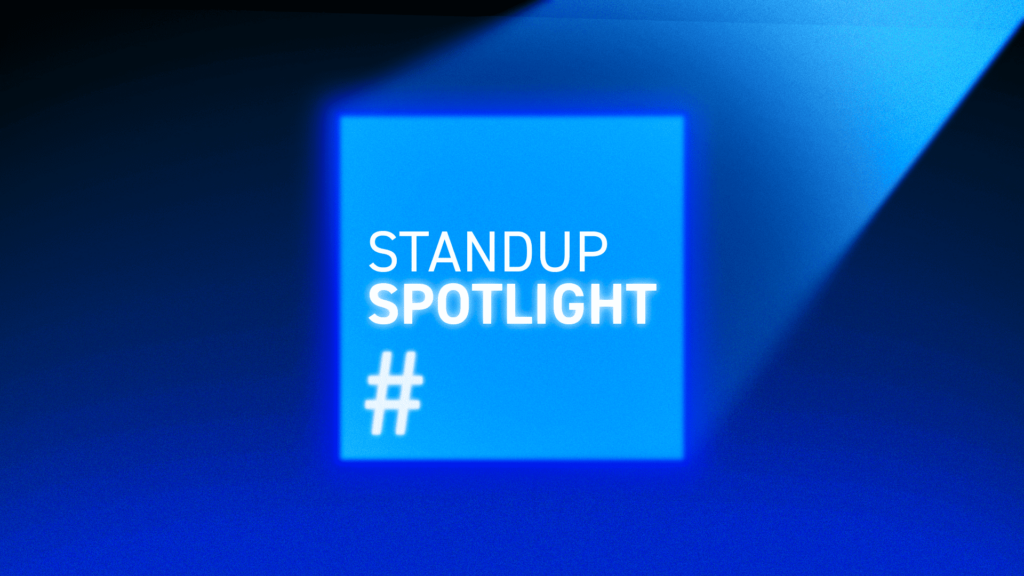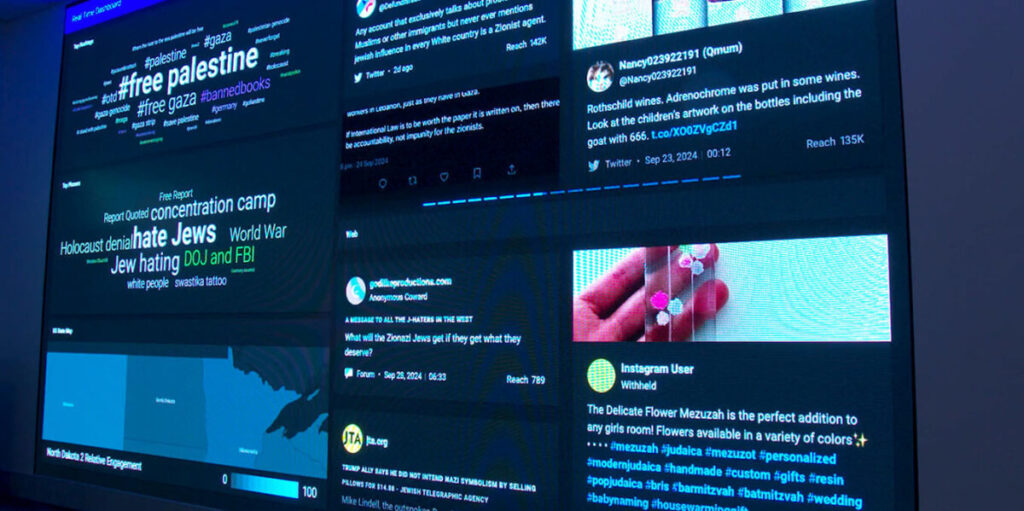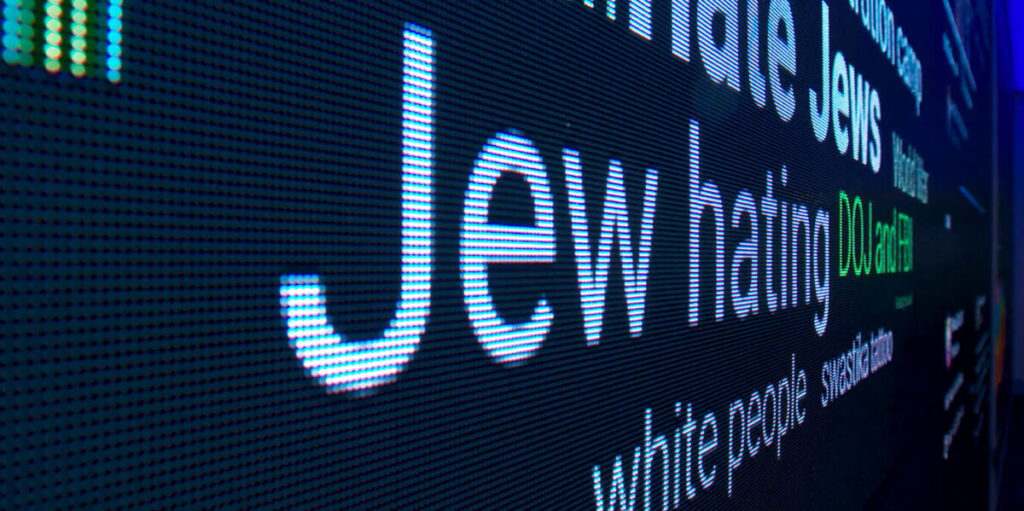Yom HaShoah, Israel’s Holocaust Remembrance Day, was observed this week and served as a day of honoring and remembering the six million Jews, and millions of others, who were murdered by the Nazi regime. The day is marked with moments of silence and memorial services, and on social media people shared stories of their ancestors to emphasize the call of “never again.”
This year, the urgency to share stories from survivors was further emulated by a concerning report from Claims Conference analyzing the declining rates of living Holocaust survivors. According to the report, 70% of Holocaust survivors will pass away in the next 10 years. Each year, Yom HaShoah serves not only as a memorial but also as a call to preserve truth in the face of rising Holocaust denial, distortion, and glorification.
Holocaust Denial Gains Ground on Mainstream Platforms
Conspiratorial posts denying or undermining the Holocaust have become increasingly visible on mainstream social media platforms in recent years—particularly as content moderation policies are rolled back. Holocaust deniers use these platforms to cast doubt on well-documented history, often claiming the Holocaust was fabricated by Jews for political or financial gain. They do so by attacking facts, discrediting survivor testimony (including well-known accounts like Anne Frank’s), questioning the number of Jews murdered, and denying that camps like Auschwitz were used for systematic extermination.
Although these conspiracy theories have been thoroughly debunked, deniers continue to adapt their language and strategies to keep them alive online. In the following analysis, we explore how these narratives are evolving and the new ways they are proliferating across social media.
Claim: 6 Million Jews Were Not Murdered in the Holocaust
The claim that six million Jews were not murdered in the Holocaust remains one of the most persistent and widely circulated conspiracy theories promoted by Holocaust deniers, despite overwhelming historical evidence to the contrary. In earlier denial narratives, the number of Jewish victims was often broadly questioned or mocked without offering specific alternatives. One notable example is the phrase “6 gorillion,” a sarcastic term used to suggest that Jews vastly exaggerate the death toll. While the term has circulated since at least 2013, its usage on mainstream platforms has declined over the past two years, according to Command Center monitoring.
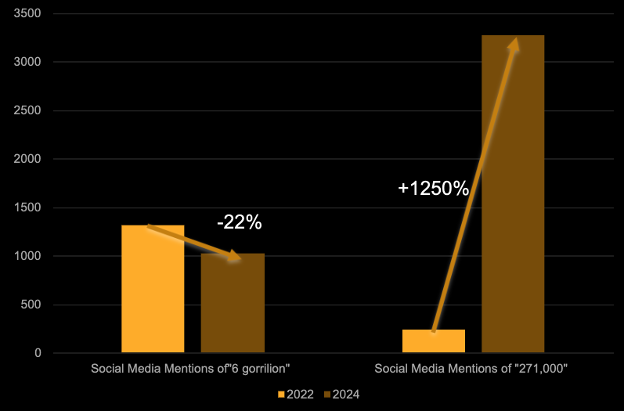
In its place, Holocaust deniers have increasingly cited the number 271,000 as the supposed “real” death toll. This figure originates from a document in the Arolsen Archives that lists death certificates issued for prisoners in certain Nazi concentration camps. However, the Arolsen Archives explicitly note that the document is not comprehensive. It excludes Jews murdered in camps such as Auschwitz-Birkenau, where the majority of victims were not issued death certificates, and does not account for the hundreds of thousands killed in mass shootings by Nazi mobile killing units.
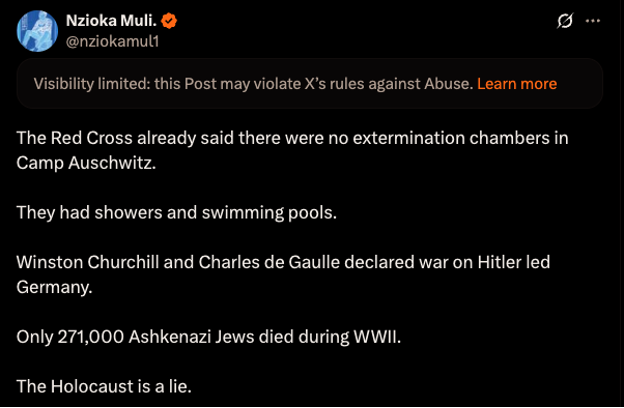
Claim: The Diary of Anne Frank Was Fabricated
Holocaust deniers love questioning the authenticity of The Diary of Anne Frank. The most common conspiracy theory is the ballpoint pen claim, which falsely asserts that the diary was written with a ballpoint pen (which didn’t exist at the time), ignoring extensive forensic evidence confirming it was written with a fountain pen and pencil. The theory gained momentum in the 1980s after a forensic investigation found a few annotations in ballpoint pen, likely added after the war by editors or archivists.
This conspiracy, among others, also fueled the false claim that Otto Frank, Anne’s father, wrote or fabricated the diary. In reality, forensic handwriting analysis, ink studies, and paper dating confirm the diary’s authenticity. More recently, Holocaust deniers have spread a newer conspiracy involving Meyer Levin, a Jewish-American journalist. Levin, who documented Nazi concentration camps after the war, became interested in Anne’s story and wrote a script to adapt the diary into a play. Holocaust deniers have twisted a legal dispute between Levin and Otto Frank—over the play’s rights—into a false claim that Levin ghostwrote the diary.

Claim: Auschwitz Was Not a Death Camp
Auschwitz-Birkenau remains one of the most iconic symbols of Nazi brutality during the Holocaust—and for that reason, it has become a central target for Holocaust deniers. By attacking Auschwitz with false claims about gas chambers, death tolls, and camp conditions, deniers attempt to undermine survivor testimony, distort the historical record, and cast doubt on the Holocaust as a whole. Common claims include that Auschwitz was merely a labor camp, that deaths were due to disease and starvation rather than murder, that there were no gas chambers, and that Zyklon B was only used to kill lice—not people. All of these claims have been thoroughly debunked by historians.
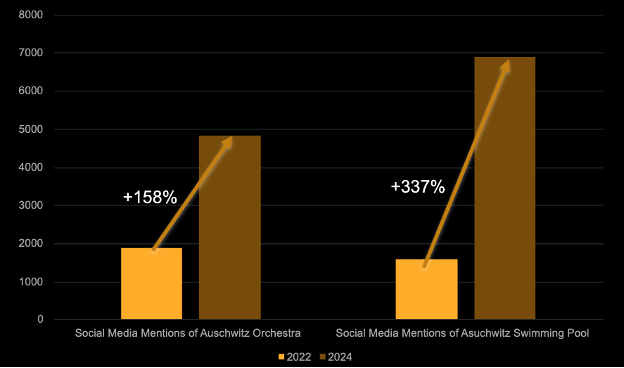
In recent years, a newer narrative has emerged claiming that Jews were treated well at Auschwitz and had access to amenities such as sports fields, cultural events, post offices, and even a swimming pool. While some of these features did exist, they have been heavily misrepresented. For example, it is true that Auschwitz had an orchestra, but its role was often to play during roll calls or while prisoners were marched to the gas chambers. These so-called amenities were largely staged for Nazi propaganda, designed to give the appearance that prisoners were being treated humanely. The swimming pool, often highlighted by deniers, is also misleading; some historians believe it was built for propaganda or use by Nazi guards, while others argue it was simply a water reservoir.
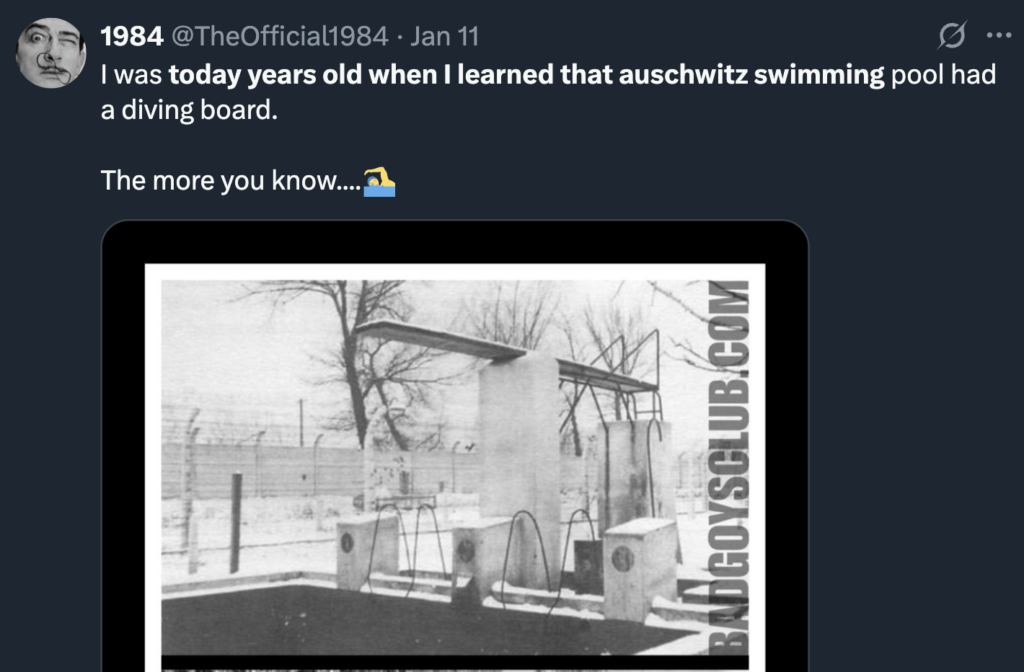
The spread of Holocaust denial and distortion online continues to evolve, with old conspiracies resurfacing in new forms and gaining visibility through memes, pseudohistory, and misinformation. As social media becomes a primary source of historical awareness for many, especially younger audiences, these narratives challenge the reliability of survivor accounts and the public’s understanding of documented events. The declining number of living Holocaust survivors adds urgency to these challenges, as firsthand testimony becomes increasingly rare and the responsibility to preserve historical truth shifts to future generations.

